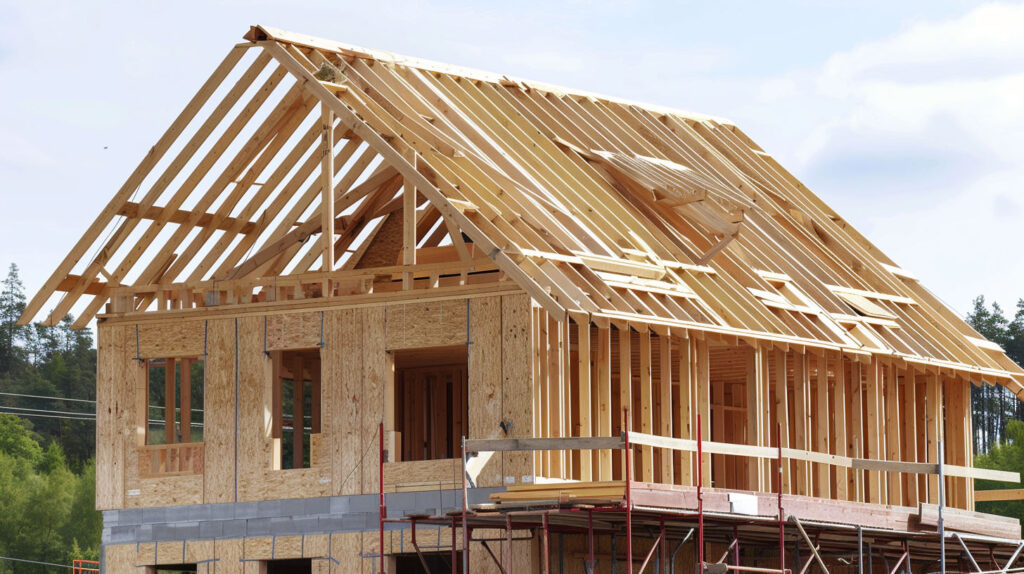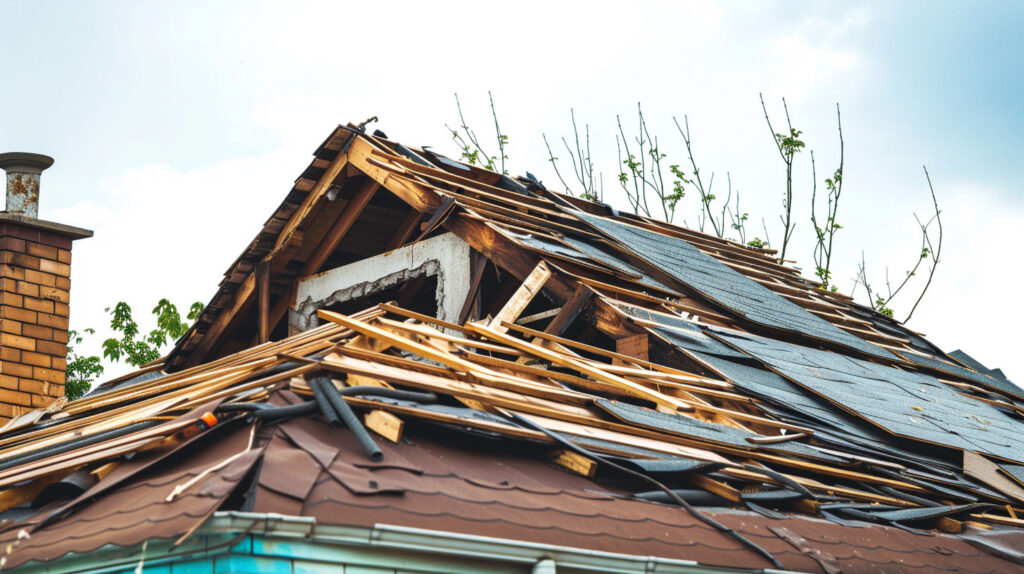Understanding Roof Load Ratings and Safety
Understanding the complexities of roof load ratings is essential for homeowners, particularly in regions like Burbank, CA, where structural integrity can be impacted by various factors. At Specialist Roofing & Repair, we emphasize the importance of knowing the maximum load capacity of your roof, providing significant peace of mind. Our expertise ensures that your roof can handle the combined weight of roofing materials, snow accumulation, and even solar panels without risk of overloading. We recommend regular inspections and adherence to local building codes, as our dedicated team is committed to preventing costly damage and safeguarding the longevity of your home while enhancing its overall safety.
The Importance of Roof Load Ratings for Homeowners in Burbank, CA
Understanding roof load ratings is crucial for homeowners in Burbank, CA, as these ratings directly influence the structural integrity of residential properties. Complying with local building codes ensures that your roof can withstand various types of loads, including the weight of roofing materials, environmental factors, and potential additional loads from installations such as solar panels. Regular inspections and maintenance help identify any signs of wear, providing peace of mind and safeguarding against costly damage that could arise from an overloaded roof.
What Are Roof Load Ratings?
Roof load ratings indicate the maximum weight a roof can support, including both permanent and temporary loads. Crucial for ensuring structural integrity and safety, allowing homeowners to make informed decisions regarding roofing materials and designs while effectively managing potential risks.

Why Roof Load Ratings Matter for Safety
Ensuring the safety of your home hinges significantly on the understanding of roof load ratings. These ratings dictate the maximum weight the roof can support, encompassing both dead load and live load considerations. Neglecting these critical factors could lead to structural integrity issues, costly repairs, or, in severe cases, roof collapse. Regular inspections help identify signs of wear, allowing for necessary adjustments to maintain optimal load capacity. Ultimately, adhering to local building codes provides homeowners peace of mind regarding their roof’s safety.
Types of Roof Loads Explained
Roofs bear two primary types of loads: dead loads, which include the weight of roofing materials and fixtures, and live loads, which encompass additional weight from snow accumulation, people, or equipment. Environmental factors such as strong winds and heavy snowfall contribute to these dynamic loads. Recognizing how these loads impact your roof’s load capacity aids in making informed decisions regarding maintenance and potential upgrades, ensuring safety and peace of mind.
Dead Load vs. Live Load
Understanding the distinction between dead and live load is crucial for evaluating a roof’s load capacity. Dead load refers to the permanent weight of the roof structure itself, including roofing materials such as asphalt shingles or metal roofing. In contrast, live load encompasses variable weights from occupants, snow accumulation, or additional equipment like solar panels. Recognizing these types of loads helps ensure that building owners adhere to local building codes, maintaining the roof’s strength and integrity for safety and longevity.
Impact of Environmental Loads (Snow, Wind, Debris)
Environmental loads significantly affect your roof’s load capacity and overall integrity. Heavy snowfall can lead to snow accumulation, which may surpass the roof’s weight capacity, potentially resulting in structural damage. Strong winds can exert lateral forces, impacting the stability of the roofing materials and increasing the risk of costly repairs. Additionally, debris from trees or nearby structures can add unexpected weight, further challenging your roof’s design. Regular inspections and proper maintenance are critical to ensuring your roof withstands these environmental factors with peace of mind.

Key Factors Affecting Your Roof’s Load Capacity
Roofing Materials and Their Strengths
Asphalt shingles, known for their cost-effectiveness and versatility, provide a reliable dead load, while metal roofing options like standing seam and corrugated styles contribute to a lower total weight, ensuring enhanced performance against live loads. Concrete tiles, although heavier, deliver increased durability and superior longevity. Selecting appropriate materials not only adheres to local building codes but also fortifies the roof structure against potential costly damage and extends the lifespan of your home.
Roof Pitch, Span, and Architectural Design
Variations in roof pitch, span, and architectural design significantly influence a roof’s load capacity. A steeper pitch often enhances water drainage and minimizes snow accumulation, thereby maintaining structural integrity under weight. On the other hand, expansive spans, while visually appealing, can lead to a lower load capacity without adequate support. Understanding these design elements ensures the longevity of your home and helps prevent costly repairs, providing peace of mind that your roof can withstand environmental stresses and additional loads effectively.
How Specialist Roofing & Repair Ensures Roof Safety
Expert roofing specialists conduct thorough inspections to evaluate the roof’s load capacity, identifying any signs of wear or structural integrity issues. They understand the specific requirements set forth by local building codes and can accurately assess the roof’s ability to support additional weight, such as solar panels or heavy snow accumulation. By performing regular maintenance and employing advanced repair techniques, these professionals ensure the longevity of your home, safeguarding against costly damage while providing homeowners with invaluable peace of mind.
Our Award-Winning Certifications and Partnerships
Recognized for excellence, our team holds multiple prestigious certifications that affirm our commitment to quality and safety in roofing services. These accolades not only highlight our adherence to local building codes but also demonstrate our expertise in evaluating roof load capacity and structural integrity. Collaborating with industry-leading partners allows us to leverage advanced techniques and materials, ensuring robust solutions that enhance the longevity of your home. Choosing us provides peace of mind, knowing your roof is in capable hands.
Roof Inspection and Load Assessment Process
A comprehensive roof inspection and load assessment process is essential for evaluating a roof’s load capacity and overall structural integrity. Trained professionals meticulously assess roofing materials, design, and current conditions to determine if the roof can safely support its static and live loads, including potential extra weight from solar panels or heavy snow accumulation. Regular inspections not only identify early signs of wear but also provide homeowners with peace of mind regarding the roof’s longevity and adherence to local building codes.

Connect with Us
Understanding roof load ratings is essential for ensuring the longevity and safety of your structure. Regular inspections and adherence to local building codes can prevent costly damage and maintain the structural integrity of your home. With the right knowledge regarding roofing materials and their capabilities, homeowners can confidently manage their roof’s load capacity. Our awards, including Owens Corning Platinum Preferred Contractor, Polyglass Quantum Contractor, and BBB A+ Rated, highlight our commitment to excellence. Prioritizing maintenance and seeking the expertise of certified professionals will provide peace of mind, safeguarding both your property and the well-being of its occupants.
Frequently Asked Questions
How often should I have my roof’s load capacity checked?
Regular checks of your roof’s load capacity should be conducted every three to five years, or after significant weather events. This ensures that any potential issues, such as material deterioration or structural weaknesses, are identified early to maintain safety and integrity.
What is the maximum safe load limit of a roof?
The maximum safe load limit of a roof varies based on its design, materials, and local building codes. Generally, roofs can support between 20 to 40 pounds per square foot for live loads, ensuring safety under typical conditions like snow, rain, and maintenance activities.
What does 20 lb roof load mean?
A 20 lb roof load indicates the amount of weight a roof can safely support per square foot. This rating encompasses both dead loads, such as roofing materials, and live loads, like snow or people. Understanding this helps homeowners ensure their roofs are safe and effective.
Read our blog: When Is Roof Replacement Better Than Partial Repair?



